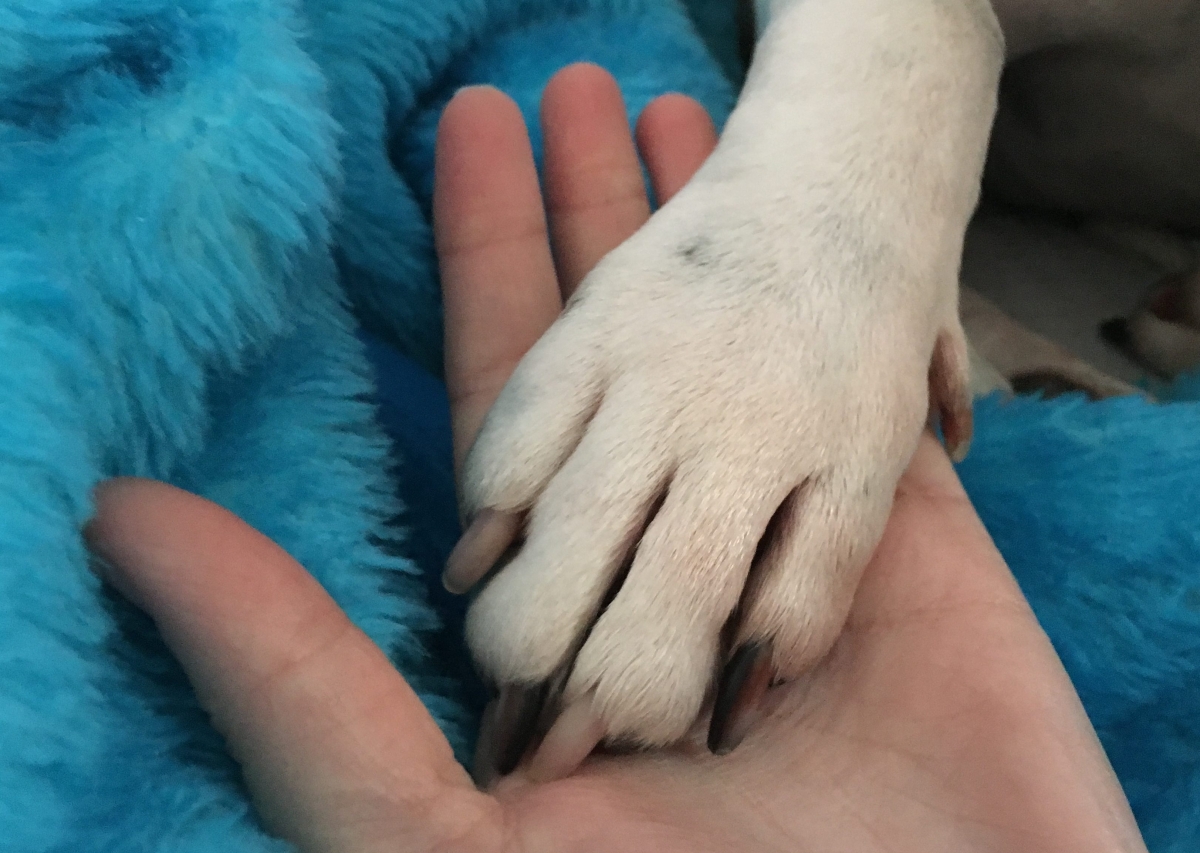Part 3 – Understanding Your Dog’s Senses

Part 3 is on Touch!
Incase you missed Part 1 – Eyesight and Part 2 – Hearing you can give them a read here.
In this 5 Part Series I’m taking a look at our dog’s 5 senses – Eyesight, Hearing, Touch, Taste and Smell. I think it’s important to have an understanding on how our dog’s navigate the world around them.
I’m hoping by the end of the series you’ll understand your dog a bit more. If anything, you’ll definitely sound like you know your s**t when you’re down the dog park or amongst friends lol.
Part 3 – TOUCH
I’m not sure whether your fur kids do this but when we’re sitting on the lounge Billy likes to sit on us, or if he’s on the floor he’s sitting on our feet. When we’re on the bed some part of his body needs to be touching us. Wherever we are if he can get near us some part of his body is touching us.
Touch helps our fur kids to form an emotional bond with us as their humans. We have taken them out of the traditional pack form they essentially originated from and we have become that pack.
A sense of touch, whether it’s a nibble, a nudge, leaning on your or some part of your fur kids touching you, is part of how they communicate with us.
1. IN THE BEGINNING
Dogs are born both deaf and blind (until 10-14 days) so they use their sense of touch to navigate the world around them.
Straight from the birthing canal the mother will break the birthing sack by licking her puppy and essentially getting air flow started. She will also lick her pups to encourage them to go to the toilet.
Pups will use their sense of touch to find their mother. They also use their sense of touch when drinking from her, they push while drinking from the teat to stimulate the flow of milk for feeding.
This early sense of touch builds a strong bond with mother and pups and other litter mates.
Our fur kid’s entire body (including paws) is covered with touch sensitive nerve endings, the most sensitive being along the spine towards the tail.
Obviously a dog’s touch sensitivity will vary from dog to dog. I groom some dogs that are sensitive to being brushed and others don’t care!!!
2. THREE POINTS OF TOUCH
Dogs use their sense of touch to learn about their environment by utilising their whiskers, paws and their skin.
a) Whiskers (aka Vibrissae)
Whiskers are long, straight and stiff sinus hairs that are found on the top, sides and bottom of the head.
Each whisker has a good blood supply and a vast amount of nerve endings. Whiskers are seen as specialised sensing organs that are embedded much more deeply in the skin than other hairs.
Whiskers also have a greater number of receptor cells at their base. They can detect air currents, subtle vibrations and objects in the dark and provide an early warning system for objects that might strike the face or eyes.
Experts have claimed that whiskers on the muzzle (around the mouth area) help to funnel scents/smells to the dog’s nose.

Side view of Billy’s Face if you zoom in you can see his side whiskers.
b) Paws
Paws are pretty much what your dog walks on, their feet! They are a very sensitive area that your dog uses to explore their environment with.
The top of the paw consists of very sensitive nerve endings, tendons, ligaments and connective tissue. The toenails are used to give their feet stability when moving.

Above is Billy’s paw top side

Billy’s pad (underneath paw)
The underside of the paw is generally pretty tough, however it is still a very sensitive area to hot and cold surfaces. The pad (black nobbly bits) is used for traction and shock absorption when moving.
Dogs also sweat through their pads and have scent glands – which is why they sometimes kick up their feet (after toilet time) to throw their scent around!
c) Skin
Most of our fur kids sense of touch however does involve the skin. FYI their hair is also considered as part of their skin.
Their skin provides protection against the environment and regulates body temperature. The skin can be anywhere from 12% to 24% of a dog’s body weight.
There are 3 major layers to the skin:
Epidermis – basically provides protection from foreign substances.
Dermis – basically, supports and nourishes the epidermis. Sensory nerves are located in the dermis and hair follicles. Skin and body temperature are also regulated here.
Subcutaneous layer – contains the subcutaneous fat and muscles. The subcutaneous fat provide insulation (a reservoir for fluids, electrolytes and energy.

WHAT DOES THIS MEAN?
Our fur kids are sensitive to touch. When born they use touch to navigate their way to their mum.
They also use their sense of touch to feel their way around their environment.
Our fur kids do this by using their whiskers, paws and touch sensitive skin.
Touch is also an awesome way to strengthen the bond you have with your fur kids.
Do your fur kids lean on your or have to be touching you in someway?
I hope this post has helped you in understanding your dog’s sense of touch. We’d love to hear from you, drop us a line.
Thanks for Pawsing by.
Cheers
J & B
Woofalicious Tales
Related Posts
Part 5 – Understanding Your Dog’s Senses
Welcome to Part 5 – Smell – of this 5 Part Series on Understanding Your Dog’s…
11 August 2017Part 4 – Understanding Your Dog’s Senses
Welcome to Part 4 of this 5 Part Series on Understanding Your Dog’s Senses…
11 August 2017



Leave A Comment